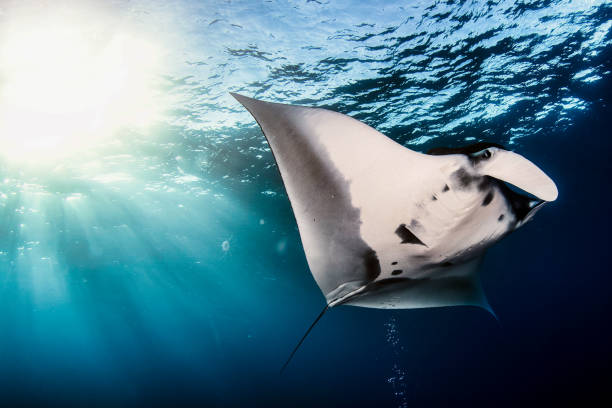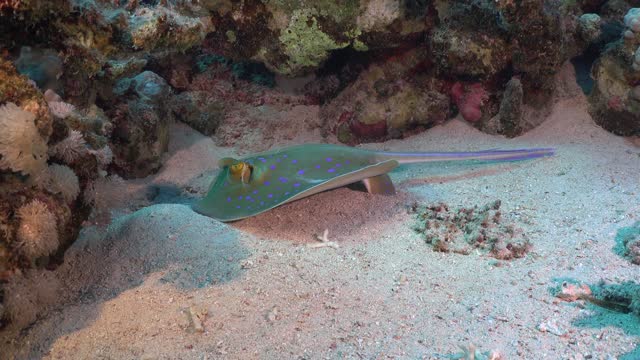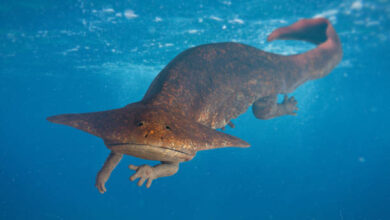What are the five defining characteristics of the cartilaginous fish?

Cartilaginous fish, also known as Chondrichthyes, are a diverse group of aquatic animals that includes sharks, rays, and chimaeras. These fascinating creatures have been around for over 400 million years, making them one of the oldest vertebrate groups on Earth. While they may share some similarities with other fish, there are five defining characteristics that set them apart. In this blog post, we will explore these unique traits and learn more about the fascinating world of cartilaginous fish. So, let’s dive in and discover what makes these ancient creatures so special!
Made of Cartilage, Not Bone
What distinguishes cartilaginous fish from their bony brethren is quite literally in their name. Unlike most fish, which have skeletons made from bone, cartilaginous fish like sharks, rays, and skates sport skeletons made primarily from cartilage. This has a multitude of benefits that make these marine species efficient swimmers and hunters.
Cartilage, being significantly lighter than bone, is a game-changer for these species. With this lighter skeletal framework, cartilaginous fish can easily stay buoyant in the water. This omits the need for a swim bladder, an organ that many bony fish require to control their buoyancy. By not having a swim bladder, cartilaginous fish conserve energy, creating a more efficient swimming and hunting experience.
This unique skeletal makeup is just one of the ways that cartilaginous fish have adapted to their underwater world. So, the next time you think about the wonders of the marine world, remember that it’s not just about the flashy scales and vibrant colors. The simple, streamlined design of cartilage has its own role in creating some of the ocean’s most fascinating creatures. From aiding buoyancy to conserving energy, it’s clear that being “made of cartilage, not bone” is a defining trait of these remarkable aquatic predators.
Moreover, this skeletal composition of cartilaginous fish plays a significant role in their incredible flexibility and maneuverability in water, furthering their advantage as efficient hunters. This flexibility allows cartilaginous fish to navigate through narrow spaces and complex terrain, something bony fish often struggle with. Their body design is optimized not just for survival, but for thriving in their diverse and demanding underwater habitats.
Indeed, cartilaginous fish have truly turned the unique trait of having a skeleton made of cartilage into an effective survival strategy. The perfect balance of buoyancy, agility and energy efficiency it offers is simply unrivaled. Cartilaginous fish embody a form of evolutionary perfection that is absolutely captivating to scientists and marine enthusiasts alike. Their ability to seamlessly navigate and conquer their aquatic environment provides them a dominant position in the ecosystem.
Unique Skin Covered in Dermal Denticles
Take a moment to imagine running your hand over the skin of a shark or ray. Instead of the smooth, slippery texture you might expect, you would feel a rough, almost sandpaper-like surface. This isn’t an accident of nature, but a key characteristic of cartilaginous fish. Rather than sporting the vibrant scales of their bony relatives, these creatures are covered in minute, tooth-like projections known as dermal denticles.
These denticles are more than just an interesting texture, they are a critical adaptation for survival. First and foremost, they act as a shield, protecting these marine predators from parasites and potential damage. Their role doesn’t stop there. Just as their cartilaginous skeleton aids in buoyancy and energy conservation, their skin design contributes to their efficiency in the water.
Each dermal denticle is hydrodynamically shaped, which reduces water resistance as the fish swims. This, in turn, enables them to glide swiftly and silently through the water, perfect for ambushing prey or escaping predators. But that’s not all. These tiny structures also disrupt the flow of water over the fish’s body, reducing the turbulence and noise produced by their movement.
So, while they may not dazzle us with shiny scales, the skin of cartilaginous fish holds its own kind of wonder. Every inch of their bodies, right down to the skin, is designed for survival, stealth, and speed. The next time you gaze upon a shark or ray, consider the unique marvel of dermal denticles – they may not sparkle in the sunlight, but they are a testament to the remarkable adaptations of these fascinating marine creatures.

This just further emphasizes the intriguing complexity of the natural world, especially when we delve into the specifics of cartilaginous fish adaptations. In future posts, we will explore more astonishing characteristics and behaviors that make these marine predators the epitome of undersea survival and agility. To further ignite your curiosity, we’ll dive deeper into the world of cartilaginous fish, discussing their evolution, life cycle, and extraordinary sensory systems.
Keep an eye out for our upcoming article where we shed light on these marvels of the deep sea. In the meantime, you can engage in further research or visits to local aquariums to experience the elegance and power of cartilaginous fish firsthand. Such interactions with the natural world never fail to captivate the imagination, while driving our interest in conservation efforts.
Exceptional Electro-Sensory Systems
Imagine if you could sense the slightest movements of your prey or detect a heartbeat from a distance. This isn’t a scene from a sci-fi movie; it’s everyday life for sharks, the most well-known of the cartilaginous fish. Their unparalleled hunting skills can be attributed in large part to their advanced electro-sensory system known as the Ampullae of Lorenzini.
This system isn’t just an extension of their regular sensory capabilities but a separate entity entirely, functioning as a sort of biological sonar. With this, sharks can perceive the faint electrical fields generated by the muscle movements and heartbeats of other creatures.
Imagine the advantage this gives them! Their prey can be completely hidden in sand or obscured in the murkiness of deep waters, and yet, these apex predators can pinpoint their exact location. Even in the darkest corners of the ocean, nothing can escape their electro-sensory radar.
As far as adaptations go, the Ampullae of Lorenzini stands as one of the most sophisticated, giving sharks an edge in the underwater world. Indeed, this remarkable sensory system not only sets them apart from many other marine species but also solidifies their status as one of the ocean’s most effective hunters. So, the next time you marvel at a shark’s hunting prowess, remember it’s not just about their sleek bodies and sharp teeth.
It’s also about their unseen, yet extraordinary, ability to sense the invisible electrical fields of life around them. This is yet another testament to the fascinating adaptability of cartilaginous fish. While most cartilaginous fish boast this unique ability, sharks have taken it a notch higher, developing a sophisticated form that bolsters their standing as apex predators. It serves as a reminder of how much we still have to learn about these fascinating underwater creatures and their sensory adaptations.
Internal Fertilization Sets Them Apart
The birds and the bees have a different tale in the aquatic world, especially when it comes to cartilaginous fish. While most fish species scatter their eggs and sperm in the open water for external fertilization, sharks, rays, and skates follow a different script. It’s a bit more intimate, a bit more selective, and involves a little more parental input. Yes, you guessed it right – internal fertilization is the norm in the world of cartilaginous fish.
In a rare twist, male cartilaginous fish are equipped with claspers, specialized structures that are modified pelvic fins used to transfer sperm directly into the female. This direct transfer ensures a higher success rate for fertilization. It’s a unique adaptation that aids these marine predators in guaranteeing the next generation.

Once fertilized, the females of these species have the choice to either lay eggs or give birth to live young – a process known as oviparity and viviparity, respectively. This might seem like a small detail, but it’s a defining characteristic that significantly sets cartilaginous fish apart from their bony counterparts.
This adaptation to internal fertilization, however, does have a catch. It results in a slower rate of reproduction for these species, as females often take longer to reproduce again after giving birth or laying eggs. While this might seem like a disadvantage, it’s all part of the delicate balance of life in the ocean.
So, next time when you watch a shark gliding effortlessly through the water or a ray undulating over the sandy sea floor, remember there’s a whole lot more going on than meets the eye. From their cartilage-made skeletons to their internal fertilization, every characteristic of these fascinating marine creatures is a testament to their adaptability and survival in the vast, and often unforgiving, ocean world.
Jaw Position and Gills Slits Differences
Picture this: a shark glides silently across the ocean floor, its mouth set underneath its body in a perfect position to ambush unsuspecting prey. This isn’t by accident. Cartilaginous fish have a distinctly different jaw placement than their bony counterparts. Instead of having their mouths set at the front of their bodies like most fish, they’re located on the underside. This unique positioning gives them a distinct advantage when feeding from the seabed, allowing them to snatch up prey with ease and precision.
But it doesn’t stop at jaw placement. Turn your gaze to the sides of these creatures, and you’ll find another significant difference: their gill slits. The gill slits of cartilaginous fish, typically numbering five to seven, are not hidden away behind a gill cover like they are in bony fish. Instead, they are visible on the sides of their bodies, exposed to the world. This adaptation plays a vital role in their respiration, supporting these top predators in their tireless quest for survival in the underwater world.
So the next time you spot a shark, ray, or skate, take a moment to appreciate the nuances of their design. Their unique jaw position and visible gill slits are not just fascinating anatomical traits, but they are also critical adaptations that help these creatures thrive in their marine habitats. It’s another testament to the remarkable resilience and adaptability of cartilaginous fish, distinguishing them as some of the most intriguing and effective predators in our oceans.



